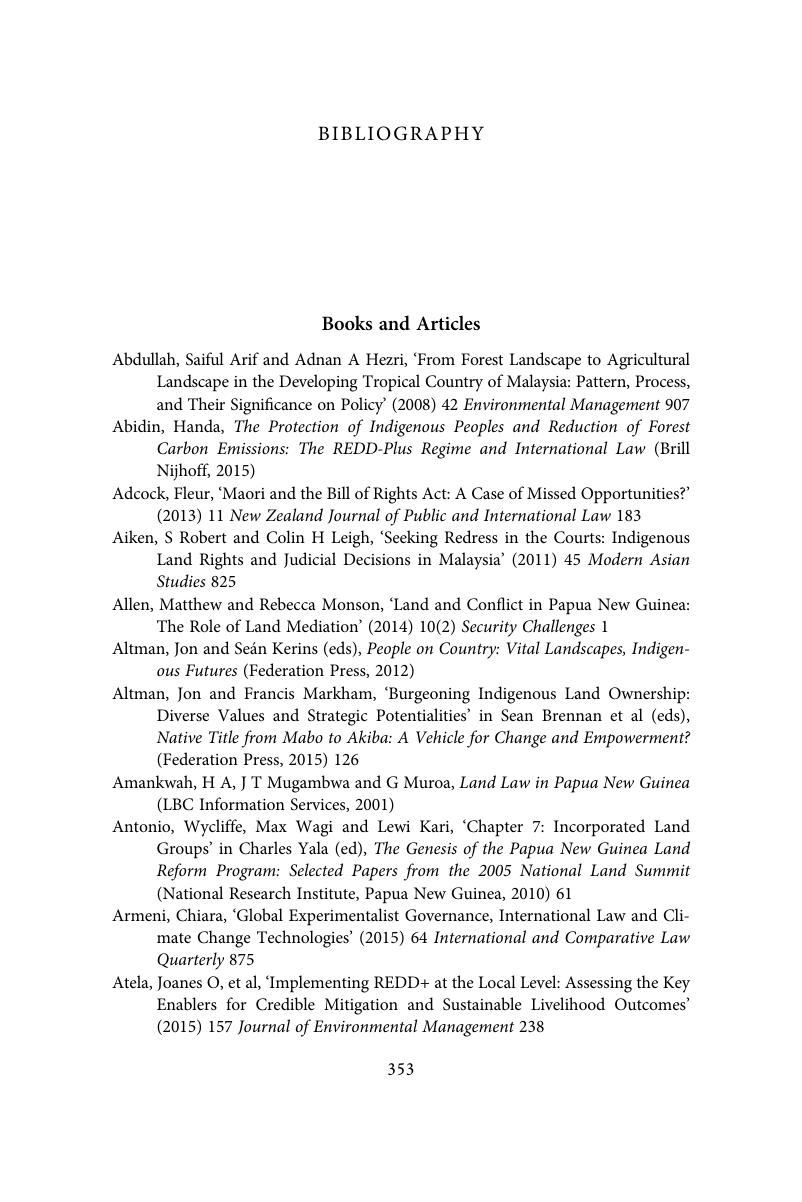 The Impact of Climate Change Mitigation on Indigenous and Forest Communities
The Impact of Climate Change Mitigation on Indigenous and Forest Communities Book contents
- The Impact of Climate Change Mitigation on Indigenous and Forest Communities
- The Impact of Climate Change Mitigation on Indigenous and Forest Communities
- Copyright page
- Contents
- Figures
- Acknowledgements
- Abbreviations
- Cases
- Conventions, Declarations and Decisions of Conferences of the Parties
- Legislation
- 1 Introduction
- Part I Climate Change Mitigation and Forest Carbon Sequestration
- Part II State and Indigenous Peoples’ Relations in the Context of REDD+
- Part III Country Examples
- Part IV Implications and Conclusions
- Bibliography
- Index
- References
Bibliography
Published online by Cambridge University Press: 13 October 2017
- The Impact of Climate Change Mitigation on Indigenous and Forest Communities
- The Impact of Climate Change Mitigation on Indigenous and Forest Communities
- Copyright page
- Contents
- Figures
- Acknowledgements
- Abbreviations
- Cases
- Conventions, Declarations and Decisions of Conferences of the Parties
- Legislation
- 1 Introduction
- Part I Climate Change Mitigation and Forest Carbon Sequestration
- Part II State and Indigenous Peoples’ Relations in the Context of REDD+
- Part III Country Examples
- Part IV Implications and Conclusions
- Bibliography
- Index
- References
Summary

- Type
- Chapter
- Information
- The Impact of Climate Change Mitigation on Indigenous and Forest CommunitiesInternational, National and Local Law Perspectives on REDD+, pp. 346 - 352Publisher: Cambridge University PressPrint publication year: 2017


